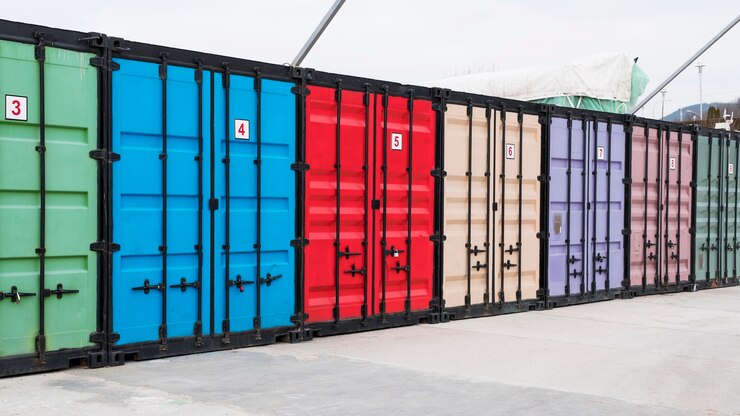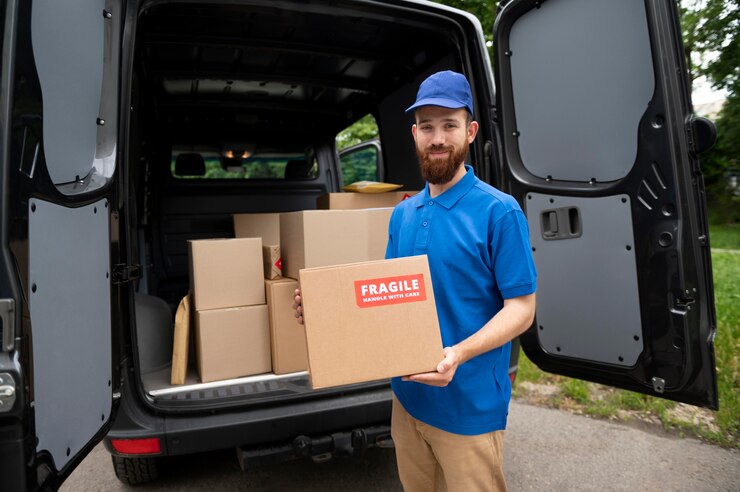The recent trajectory of commerce has seen increasing global demand for goods and services. Intermodal transportation, the use of multiple modes of transportation (such as rail, truck, ship, or plane) to move goods or passengers from origin to destination, is becoming popular for businesses that ship their goods worldwide. It has become crucial for more effective, affordable, and sustainable logistics processes.
Intermodal transportation enhances a transportation network’s economic efficiency by leveraging cargo and transport effectively. Rail is advantageous for long distances due to its cost-effective line-haul economics, while trucks offer local pick-up and delivery flexibility. This approach treats the entire journey holistically rather than as a sequence of individual segments, each managed with its own documentation and rates.
Understanding Intermodality in Logistics
The intermodal transportation process initiates with an empty truck arriving at the consignee’s location. The shipper or designated transporter then loads the truck’s rear container with the products, minimizing the need for further handling until they reach their ultimate destination.
Subsequently, the truck utilizes the local road system to reach a rail yard, where a logistics firm loads the containers onto the train. From there, the container may journey by rail to a port for shipment or a railroad station within the destination city.
Intermodal shipments can be classified as domestic and international. For international shipments, 20- or 40-foot containers are used. The product stays in the same container as the cargo moves between ocean carriers, lorries, and trains. For domestic intermodal shipments, 53-foot containers are preferred. Despite using domestic intermodal” to describe these shipments, merchandise may come from abroad. The main distinction is that products are converted from 53-foot domestic containers into 20- or 40-foot international containers after arriving at a port. It also applies to a cross-dock or transload facility or distribution center. They then proceed to inland (or “domestic”) locations.
The products are now removed from the container by the logistics company. These containers are vacant and prepared for a fresh shipment. The logistics company may also handle the final mile of delivery to the customer.

The order in which the different modes of transportation are used must provide modal continuity. Intermodal transportation, which is how multimodal transportation is structured, is a series of other modalities. Trucking, rail, barges, and maritime transportation are the main modes that support intermodalism. For example, in the case of air transport, trucking is the preferred transport method for initial and last-mile deliveries. Furthermore, the load units used in air transportation are not easily interchangeable.
Intermodal transport is often confused with multimodal and combined transport. The term “multimodal transport” refers to a delivery service where the freight is delivered via two or more modes of transportation. Multimodal transportation also involves the use of many modes of transportation. These include moving a pallet from an airplane to a truck and combining a rail and road leg transfer. It also includes performing a transfer through both water and road.
When “intermodal transport” is used, this refers to a particular type of multimodal transportation where the transported goods are contained in standardized cargo units. So, the unique characteristic of intermodal transport is to prevent breaking cargo. All the items are stored inside the same unit from start to finish of the transport cycle.
ISO containers and tanks can be loaded into container ships, freight trains, and intermodal trailers. These are the cargo containers of choice for intercontinental import/export by water. Swap bodies, semi-trailers, and non-ISO containers can all be utilized in intermodal transport. This is handy when the unit doesn’t need to be transported on a container vessel.
Combined transport is a subset of intermodal transport. For transport to be considered “combined,” most of its length must be carried by rail, barge, or sea, minimizing the use of trucks as much as possible.
5 Benefits of Intermodal Transportation
The main goal of transportation is to carry cargo from an origin location to a destination point most effectively and efficiently. Transport is effective when it meets the client’s speed, safety, and flexibility needs. It also greatly benefits your business when it is efficient. This is achieved when it produces the desired result using the fewest resources possible (money, fuel, labor, and others).
When designed and executed correctly, intermodal transportation may accomplish both objectives while maintaining high levels of supply chain efficiency.
1. Lower Costs
Businesses can cut their transportation costs by transporting freight in intermodal containers. Firms can also get significant fuel savings by using rail and trucks. Long-distance trucks can result in substantial fuel costs, but trains can reduce them. Businesses will lessen their carbon footprint.
The capacity to ship in containers is another intermodal benefit that reduces costs.
Containers can be handled together. Doing this lowers the cost of transportation. How? It switches a shipment from a truck to a train, ship, or any other combination and only requires minimal work. Containers are simple to swap between and will fit into any mode, improving the carrier process’s effectiveness.
2. Optimized Cargo Capacities
Truck and rail intermodal transportation provides dependable capacity. Since there’s
less competition, procuring freight for intermodal transport is easier. It also reduces costs further but can provide flexibility. Intermodal transport is growing in popularity due to a shortage of drivers and increased shipping traffic.
Companies can ship via intermodal at any time and a competitive price. You can avoid paying excessive rates to ensure capacity or going out of your way to accommodate carriers. It’s an effective strategy to deal with the present issues facing the trucking sector, as carriers raise prices and slow service.
3. Additional Safety
The items are kept in the containers for the duration of the trip. Moreover, they don’t require excess handling when changing between modes of transportation. These containers reduce the possibility of damaging products and function as a mini-warehouse. As a result, no one can access the products while they are being transported. Using containers also lowers the likelihood of theft. And, unlike over-the-road transport, the container is constantly under surveillance, guaranteeing the highest level of product protection.
It’s also worth noting that train transport is ideal for hazardous and flammable cargo. They travel on a fixed track and are less susceptible to accidents.

4. Sustainability
Intermodal transportation utilizes a smart combination of rail and road. Trucking is limited to first and last-mile pickup and delivery. This represents one of the most efficient ways to move towards sustainable logistics regarding environmental, economic, and social sustainability.
Businesses can reduce the environmental impact caused by a shipment by lowering their carbon footprint. Trucks can emit 19.8 pounds of carbon dioxide every 100-ton mile, compared to 5.4 pounds per 100-ton mile for trains.
5. Delivery Speed
Your business can shorten delivery times by utilizing intermodal transportation. Even over vast distances, you can choose between the fastest kinds of transport. Containers make the efficient transfer of goods from one means of transportation to another possible. Time spent loading and unloading is cut down, which speeds up delivery.
Minimize breaking containers and maximize the use of trucks in a limited area. Use a central container terminal to deliver goods. This enables more frequent and shorter road journeys, which maximizes the usage of a truck fleet.
Companies must evaluate customer needs to familiarize themselves with any basic requirements to fully enjoy this transportation method’s benefits.
Collaborating with qualified independent operators who can offer custom logistical advice is crucial. This difficult challenge calls for specialized knowledge and the ability to accurately grasp your customer’s needs. However, it also has the potential to produce significant earnings and cost savings that translate into a sustainable competitive advantage.
Better connections between ports and railway routes due to improved transportation facilities make transport combinations more flexible. Progress in standardizing administrative and judicial processes for transporting commodities is also making significant progress.
Intermodal transportation can lead to reduced expenses, quicker deliveries, secure cargo, and increased sustainability. Due to these significant advantages, intermodal transport has evolved into the preferred mode of transportation for most logistics firms. With massive growth expected in global trade in the years to come, having intermodal transport is more important than ever.
ARatum gives you access to an optimal distribution network of global warehousing partners. Select cost-efficient and trackable shipping services to suit specific products and customer demand. Book a demo now.
The cover photo of this article was sourced from freepik.



